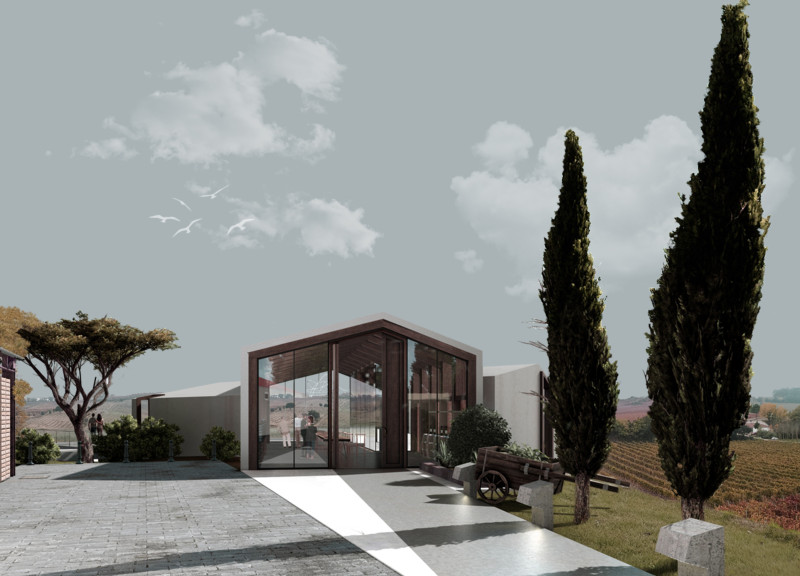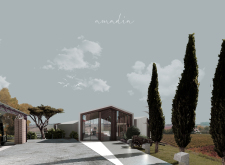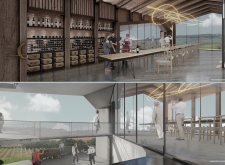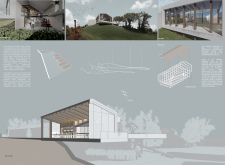5 key facts about this project
Amadia is located in a picturesque vineyard area, designed to enhance the experience of wine tasting. The project integrates with its surroundings, focusing on creating a space that connects visitors with nature. The concept centers on two intersecting volumes that serve different purposes while also emphasizing the beauty of the landscape.
Spatial Organization
The layout includes two main axes that organize the building effectively. Axis 01 directs the flow of movement and highlights views of the vineyard. Axis 02 adds to the visual experience by framing perspectives. Together, these axes create two distinct volumes that function separately across two levels, allowing guests to interact with the space and the landscape in engaging ways.
Programmatic Elements
On the lower level, key spaces are arranged to encourage interaction. This area includes a wine tasting hall, kitchen prep space, gallery, terrace, and informal seating. Each space is thoughtfully located to enhance the connection to the landscape, providing expansive views and an atmosphere that supports relaxation and conversation. The informal seating promotes socializing and activity, blending both formal and casual experiences for a richer interaction with the vineyard.
Materiality and Structure
Timber is used as the main structural material, showing a commitment to sustainability while linking the design directly to its natural setting. The choice of timber creates a welcoming environment. Cork is also featured in the seating, which connects the architecture to the wine culture, giving visitors a tangible link to the winemaking tradition.
Lighting Design
The lighting installation serves as a central feature in the main areas, drawing inspiration from grapevines. This design choice enhances the atmosphere while highlighting the organic feel of the space. The play of light and shadow inside the building adds depth to the experience, inviting guests to engage more fully with the surroundings.
The design encourages a strong relationship between the architecture and the vineyard, creating a space where visitors can appreciate the landscape and enjoy the nuances of the wine tasting experience.






















































